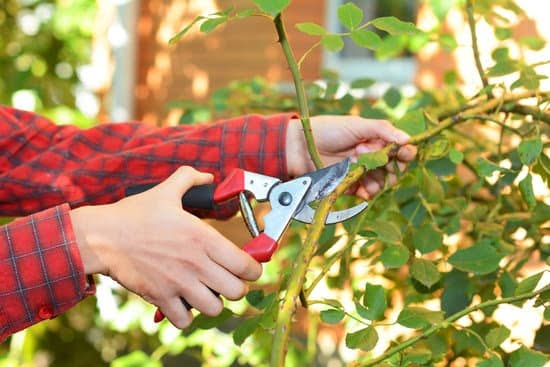Are you looking to elevate the beauty and functionality of your outdoor space? Landscape metal edging ideas offer a timeless and elegant solution to enhance the aesthetics of your landscape design. Whether you’re aiming for a sleek modern look or a more traditional feel, metal edging can add a touch of sophistication to any outdoor environment.
When it comes to landscape metal edging, there are various types to consider, from steel to aluminum and everything in between. Each type offers its own unique characteristics and benefits, allowing for flexibility in design and durability in performance. In this article, we will explore the different types of landscape metal edging available and how they can be used to transform your outdoor space.
In addition to their aesthetic appeal, metal edging also provides a range of practical benefits when incorporated into landscape design. From durability to flexibility and overall aesthetics, there are many advantages to using metal edging in your outdoor space. Stay tuned as we delve deeper into the benefits of incorporating metal edging into your landscape design.
Types of Landscape Metal Edging
When it comes to landscape metal edging, there are several types of materials to choose from, each with its own unique qualities and benefits. From the durable strength of steel to the lightweight versatility of aluminum, the options for metal landscape edging are endless. Here, we will explore the different types of landscape metal edging materials and their characteristics.
Steel Landscape Edging
One of the most popular choices for metal edging is steel. Known for its durability and strength, steel landscape edging is perfect for creating clean lines and defining different areas in your outdoor space. It is resistant to weathering and can withstand heavy foot traffic, making it an ideal choice for high-traffic areas such as walkways and driveways.
Aluminum Landscape Edging
For those looking for a lightweight yet durable option, aluminum landscape edging is a great choice. This type of edging is easy to work with and can be easily shaped to create smooth curves or straight lines in your landscaping design. Additionally, aluminum is resistant to corrosion, making it a long-lasting option for your outdoor space.
Corten Steel Landscape Edging
Corten steel landscape edging offers a rustic and natural look that blends seamlessly with the surrounding environment. This type of steel develops a protective layer of rust over time, creating a unique weathered appearance that adds character to any landscaping design. It is also incredibly durable and requires minimal maintenance, making it an attractive option for homeowners looking for a low-maintenance yet visually appealing landscape metal edging material.
By understanding the characteristics of different types of landscape metal edging materials such as steel, aluminum, and corten steel, you can make an informed decision about which material best suits your needs and design preferences. Whether you prioritize durability, flexibility, or aesthetics in your landscaping project, there’s a metal edging material that will elevate the beauty and functionality of your outdoor space.
Benefits of Using Metal Edging in Landscape Design
When it comes to landscape design, metal edging offers a range of benefits that make it a popular choice among homeowners and landscapers. One of the key advantages of using metal edging is its durability.
Unlike plastic or wood edging, metal is able to withstand the elements and is less likely to warp, crack, or break over time. This means that once installed, metal landscape edging will continue to provide a crisp and clean edge to your garden beds for years to come.
In addition to its durability, metal landscape edging also offers great flexibility in terms of design. With metal, you can create both curved and straight lines with ease, allowing you to define the various areas of your landscaping in whatever shape you desire. The sleek and modern look of metal edging also provides a clean and professional finish that adds visual appeal to any outdoor space.
Aesthetically speaking, metal edging offers a timeless elegance that can enhance the overall look of your landscape design. Whether you opt for steel, aluminum, or another type of metal, there are various finishes available that can complement different styles and themes. From natural rusted patinas to powder-coated colors, there are endless options for customizing the look of your metal landscape edging to suit your design preferences.
| Benefit | Description |
|---|---|
| Durability | Metal landscape edging is durable and able to withstand the elements without warping or breaking. |
| Flexibility | Metal allows for creating curved and straight lines easily, providing flexibility in design. |
| Aesthetics | Metal edging offers a timeless elegance with various finishes available for customization. |
Creative Design Ideas for Landscape Metal Edging
When it comes to adding landscape metal edging to your outdoor space, the design possibilities are endless. Whether you prefer a clean and modern look or something more unique and custom, there are plenty of creative design ideas to consider. From curved to straight, and even custom designs, landscape metal edging can enhance the aesthetic appeal of your garden while providing practical benefits.
Curved Designs
Curved landscape metal edging offers a softer and more organic look to your outdoor space. This type of design is perfect for creating flowing pathways, defining flower beds with natural shapes, or accentuating the contours of your landscape. By using curved metal edging, you can add a touch of elegance and visual interest to your garden while maintaining a sense of continuity throughout the design.
Straight Designs
On the other hand, straight landscape metal edging provides a clean and crisp appearance that works well in contemporary or formal gardens. This type of design is ideal for creating sharp edges along walkways, retaining walls, or neatly outlining geometric patterns within your landscape. Straight metal edging can help create defined lines and separation between different areas while showcasing a minimalist aesthetic.
Custom Designs
For those looking for something truly unique, custom landscape metal edging designs offer endless opportunities for personalization. From intricate patterns to personalized shapes and sizes, custom metal edging allows you to tailor the look of your outdoor space to fit your individual style and vision. Whether you want a specific motif or need an unconventional solution for tricky landscaping challenges, custom metal edging offers the flexibility to bring your ideas to life.
DIY Installation Tips for Landscape Metal Edging
When it comes to adding landscape metal edging to your outdoor space, there are a few key factors to consider. Not only does metal edging provide a durable and visually appealing solution for maintaining the boundaries of your garden or lawn, but it also offers a sleek and modern aesthetic that can enhance the overall look of your landscape.
With the right tools and a step-by-step guide, DIY installation of landscape metal edging can be a rewarding project that yields stunning results.
To get started with your DIY installation, here is a basic list of tools and materials you will need:
- Landscape metal edging (choose the type and design that best suits your aesthetic preferences)
- Measuring tape
- Ground stakes
- Rubber mallet
- Work gloves
- Safety glasses
- Power drill with metal-cutting blade
- Landscape adhesive (if necessary)
Once you have gathered all your tools and materials, you can begin the installation process by following these simple steps:
- Measure and mark the area where you want to install the metal edging, using ground stakes to outline the perimeter.
- Use a rubber mallet to drive the metal edging into the ground along the marked boundary, ensuring that it sits at your desired height and angle.
- If necessary, use a power drill with a metal-cutting blade to make any necessary cuts or adjustments to the edging for custom fitting.
- Secure the metal edging in place by adding landscape adhesive or additional ground stakes as needed.
- Finally, step back and admire your newly installed landscape metal edging, which will provide clean lines and distinct borders for your outdoor space.
By following this DIY installation guide and utilizing these essential tools, you can achieve professional-looking results when adding landscape metal edging to your outdoor environment. Whether you opt for straight lines or elegantly curved designs, this stylish accent will enhance the visual appeal of your landscaping while providing long-lasting durability.
Maintaining and Caring for Landscape Metal Edging
When it comes to maintaining landscape metal edging, regular upkeep is essential to ensure its longevity and visual appeal. One important tip is to regularly inspect the metal edging for any signs of damage, such as dents, rust, or loose sections.
Addressing these issues promptly can prevent further damage and prolong the lifespan of the edging. Additionally, cleaning the metal edging with a gentle soap and water solution can help maintain its visual appeal by removing dirt, grime, and other debris.
Another key aspect of caring for landscape metal edging is to protect it from potential sources of damage. This may include avoiding heavy machinery or sharp gardening tools near the edging, as well as being mindful of any corrosive substances that could come into contact with the metal. Applying a protective coating or sealant can also help safeguard the metal edging from environmental elements, preventing rust and corrosion.
Furthermore, incorporating regular maintenance tasks into your landscaping routine can contribute to the overall visual appeal of the metal edging. This may involve trimming grass and vegetation along the edges, redefining crisp lines, and refreshing mulch or gravel in adjacent areas. By dedicating time to these simple yet effective care practices, you can ensure that your landscape metal edging remains a striking feature in your outdoor space for years to come.
| Metal Edging Maintenance Tips | Visual Appeal Care Practices |
|---|---|
| Regular inspection for damage | Trimming grass and vegetation along edges |
| Cleaning with gentle soap and water | Redefining crisp lines |
| Protecting from potential sources of damage | Refreshing mulch or gravel in adjacent areas |
Inspiring Examples of Metal Edging in Landscape Design
Thinking about adding metal edging to your landscape design but not sure where to start? Let’s take a look at some inspiring examples of before and after transformations that showcase the beauty and functionality of landscape metal edging ideas.
One popular way to use landscape metal edging is to create clean lines and defined borders between different areas of your outdoor space. For example, by installing straight metal edging along the edges of a garden bed or walkway, you can instantly add structure and visual appeal to your landscape.
The before and after photos of this type of transformation will show how metal edging can elevate the overall look of your outdoor space, making it appear more polished and well-maintained.
Another creative way to use metal edging in landscape design is to create curved borders or custom designs that add a unique touch to your outdoor environment. By incorporating curved metal edging around flower beds or tree bases, you can add a sense of flow and movement to your landscaping. The before and after images of these transformations will highlight the difference that metal edging can make in creating a cohesive and visually striking landscape design.
In addition to creating defined borders and custom designs, using metal edging for pathways, patios, and driveways can also make a significant impact on the overall look and feel of your outdoor space. The before and after photos of these types of transformations will showcase how adding metal edging can enhance the functionality and aesthetics of your landscape while providing long-lasting durability.
Whether you choose steel, aluminum, or another type of metal for your landscape edging, the results will speak for themselves in transforming your outdoor space into a beautiful oasis.
Conclusion
In conclusion, landscape metal edging offers a beautiful and functional way to elevate your outdoor space. Whether you choose steel, aluminum, or another metal type, the durability and flexibility of metal edging can enhance the aesthetic appeal of your landscape design. With options for curved, straight, and custom designs, there are endless creative possibilities for incorporating metal edging into your outdoor space.
Not only does metal edging add visual appeal, but it also serves practical purposes such as defining garden beds, pathways, and other areas of your landscape. The longevity of metal edging means that once installed, you can enjoy its elegant look for years to come with minimal maintenance required. From DIY installation tips to inspiring examples of before and after transformations, there are numerous resources available to help you bring your landscape metal edging ideas to life.
So whether you are looking to add a sleek modern touch or a classic elegance to your outdoor space, consider using landscape metal edging to achieve the timeless look you desire. With the right design and proper care, metal edging will not only enhance the beauty of your landscape but also provide long-lasting functionality that will withstand the test of time.
Frequently Asked Questions
Is Metal Landscape Edging Good?
Metal landscape edging can be a good choice for certain landscaping projects. It provides a strong and durable barrier between different areas of your yard, helping to maintain clean lines and prevent the spread of grass and weeds. However, it can be more expensive than other options and may require professional installation.
What Is the Best Low Maintenance Landscape Edging?
The best low maintenance landscape edging is typically made of materials like stone, brick, or concrete. These options are long-lasting and require minimal maintenance over time. They also provide a classic and attractive border for your landscaping without the need for frequent upkeep.
What Is the Cheapest Way to Do a Edging?
The cheapest way to do edging in your yard is often with simple materials like plastic or metal strips that you can install yourself. Another budget-friendly option is using natural elements like rocks or wood to create a border between different areas of your landscaping.
While these may not last as long as more expensive materials, they can still provide a neat and tidy look to your yard at a lower cost.

Welcome to my gardening blog! I am passionate about plants and enjoy sharing my knowledge and experiences with others. In this blog, I will write about everything related to gardening, from tips on how to get started to updates on my own garden projects.





